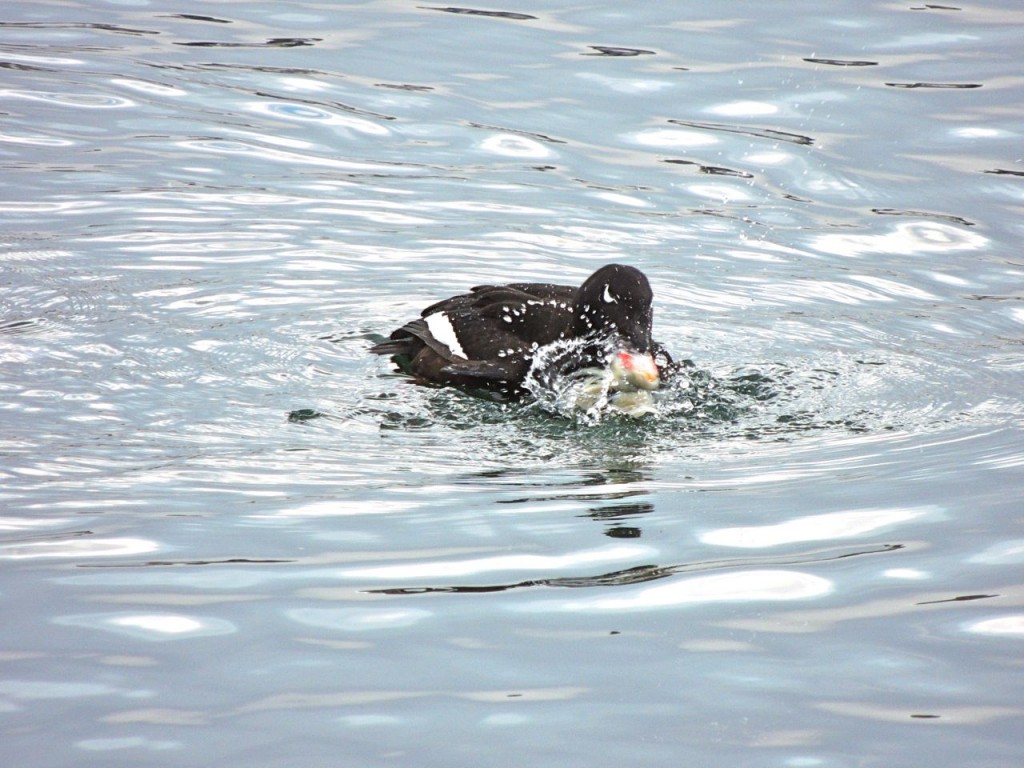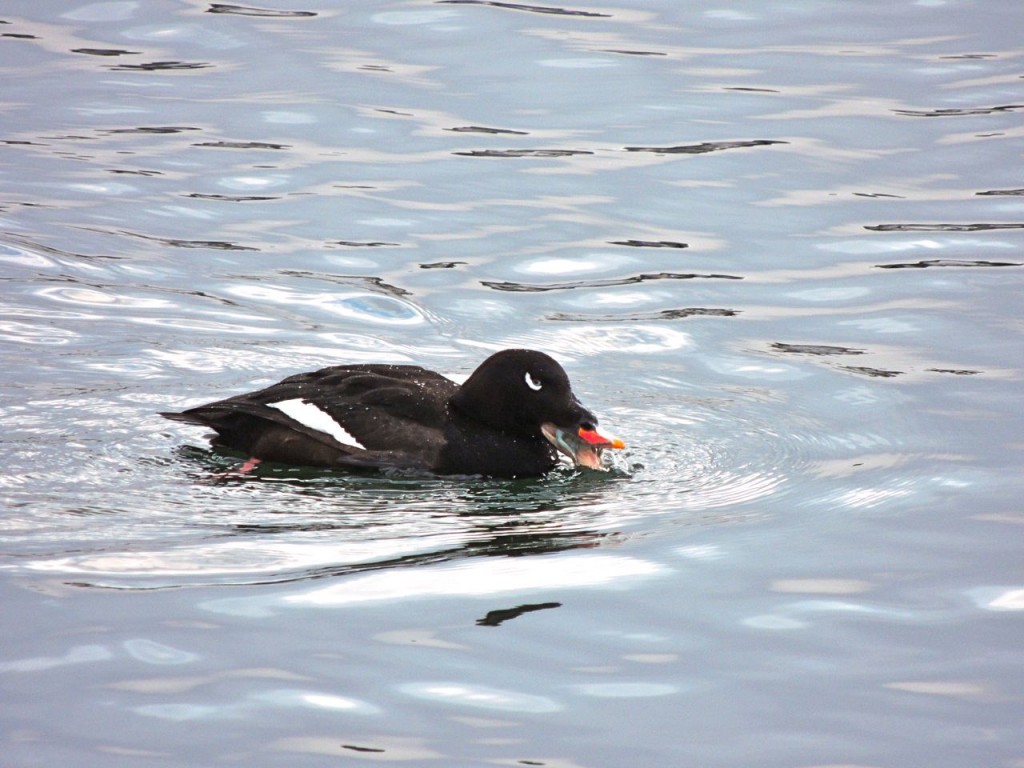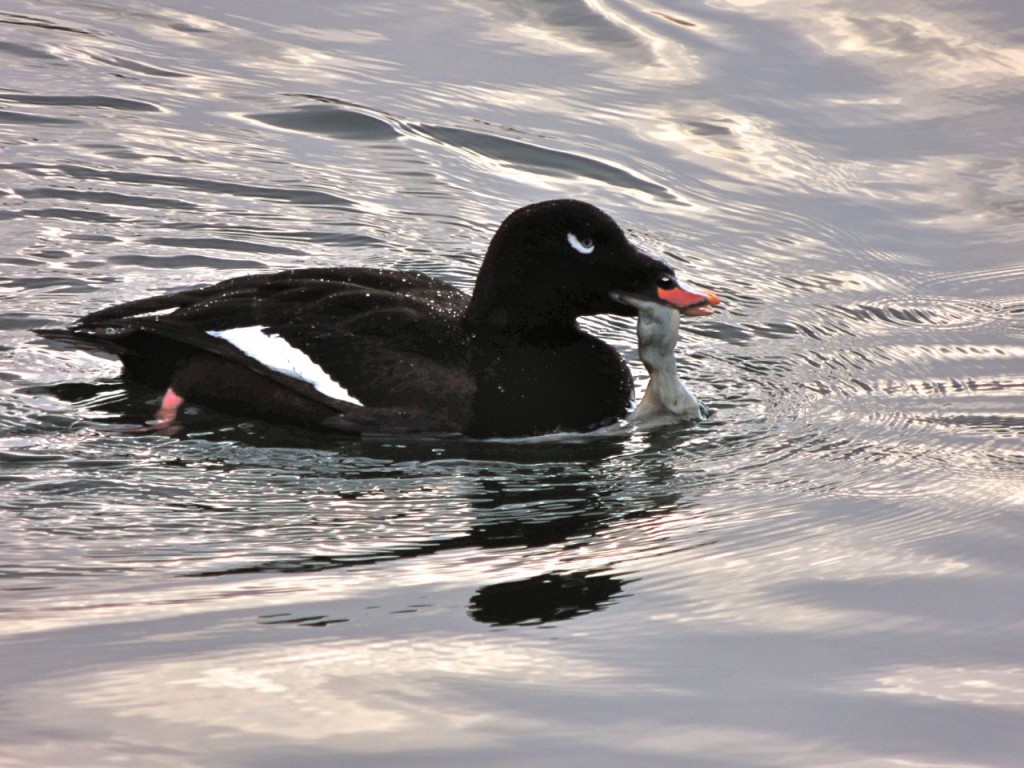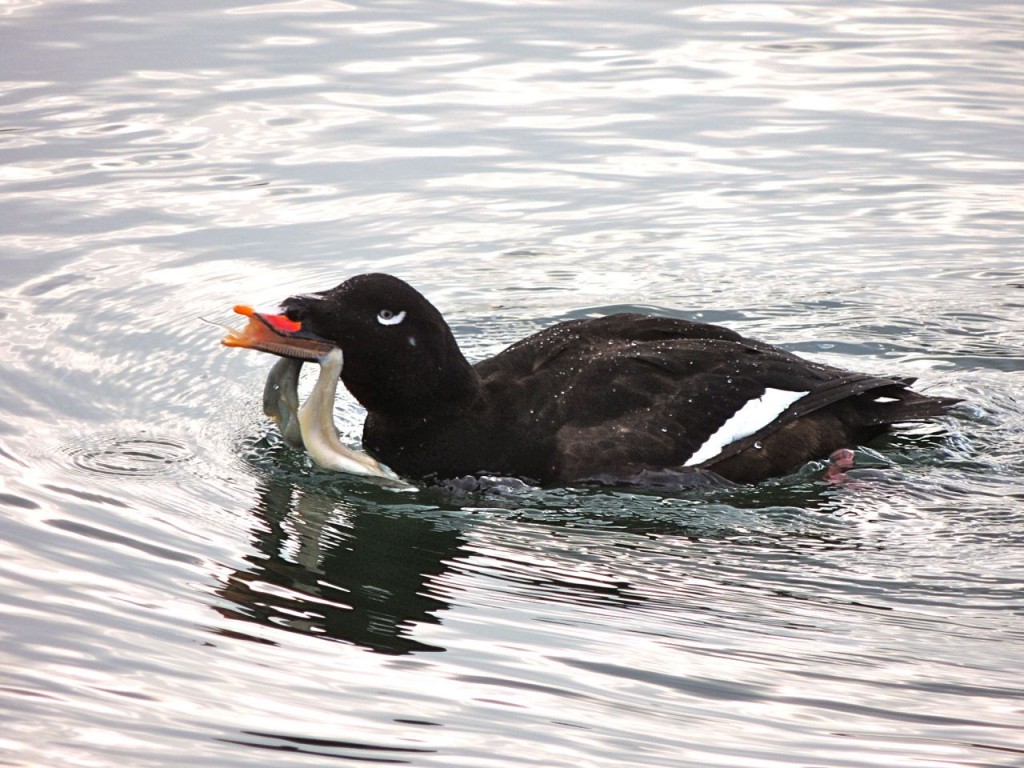5 March 2014. Bronte Harbour, Ontario. I’m running out of ways to make winter birding sound like something you might want to try someday. Today promised to be a decent, albeit chilly, birding day, so I set off to check out a couple of bird-rich sites along the shore of Lake Ontario. An inevitable cost of lakeside birding is exposure to the wind, I accept that and dress accordingly, but for reasons that I can’t quite fathom, it seems that icy winds (in particular) are almost never at your back, they prefers to attack head-on.
There was nothing unexpected in the way of birds out there although I think I saw more than usual numbers of ducks and swans that had reached the end of their tether and died on the ice. Perhaps at anytime there’s always a few corpses floating around but when the ice persists as it has this winter well, some stay where they drop and neither float nor sink. This young female Long-tailed Duck looks hale enough but was ambling along on ice looking quite disoriented; exposed like that she’s vulnerable to any number of opportunistic predators including: Great-Black-backed Gulls, Herring Gulls and Bald Eagles.
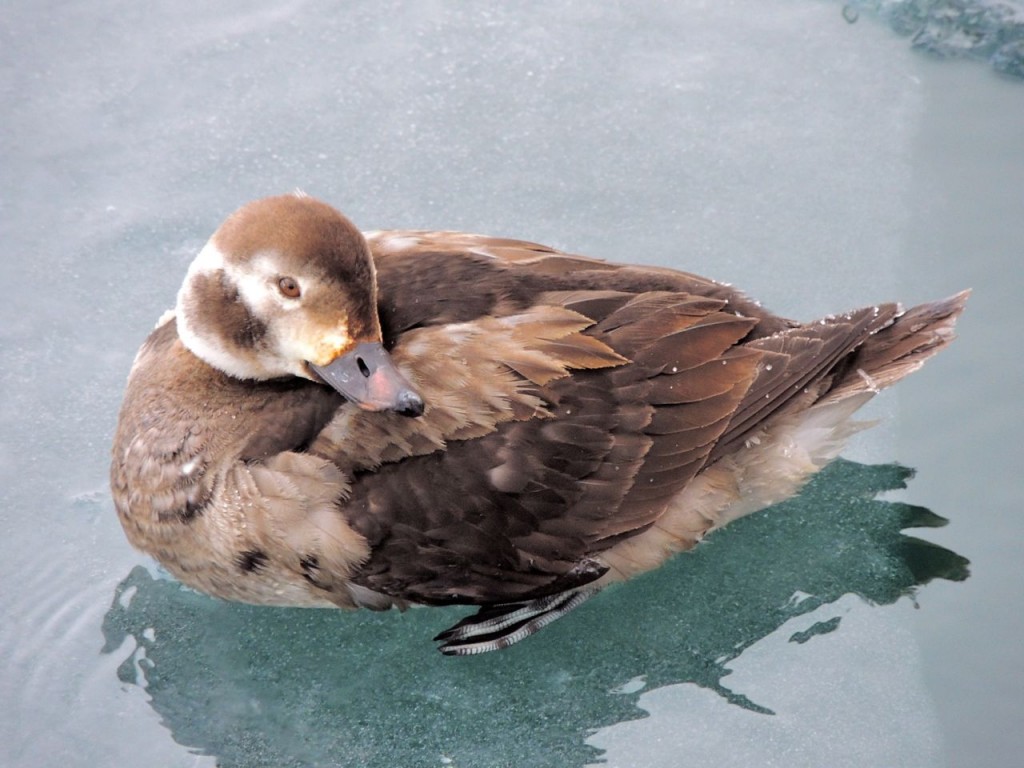
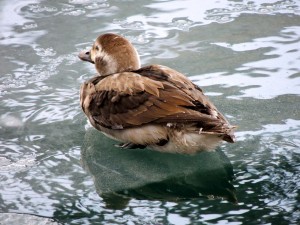
My day’s tally included three species that should turn heads: A pair of Peregrine Falcons, but then I had expected them, they’ve been using a large bridge structure as a nest site for six or seven years now; A Snowy Owl, but then we’re seeing lots of them this winter, and this was yet another one; and a group of King Eiders – and they were Birds of the Day.
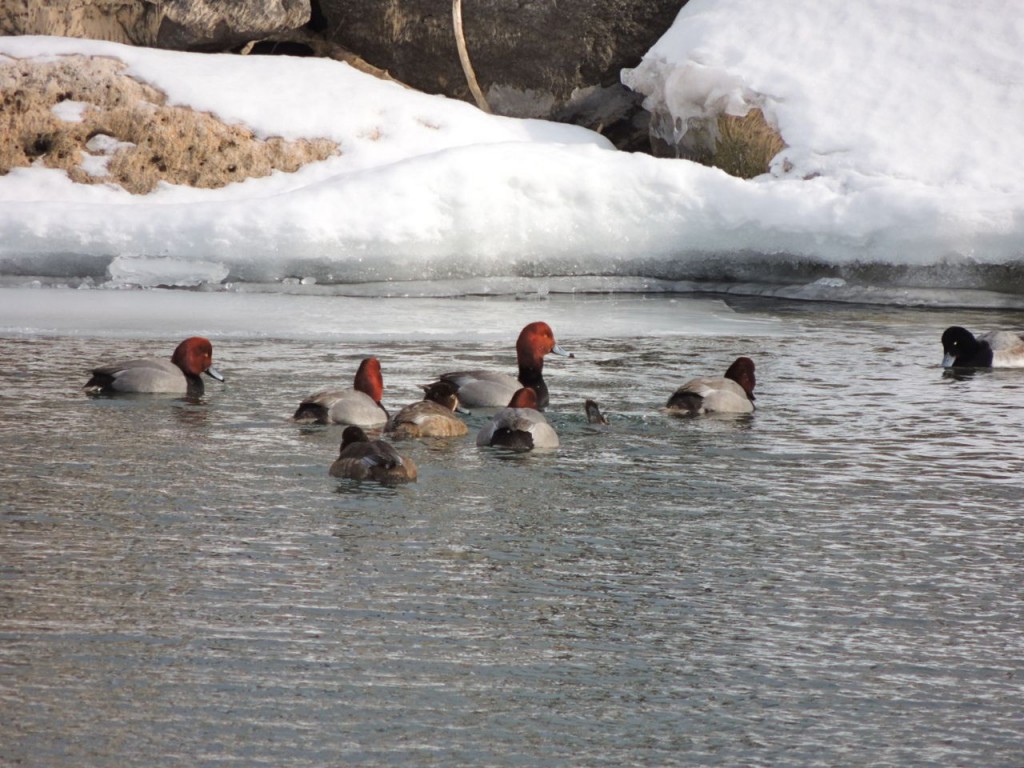
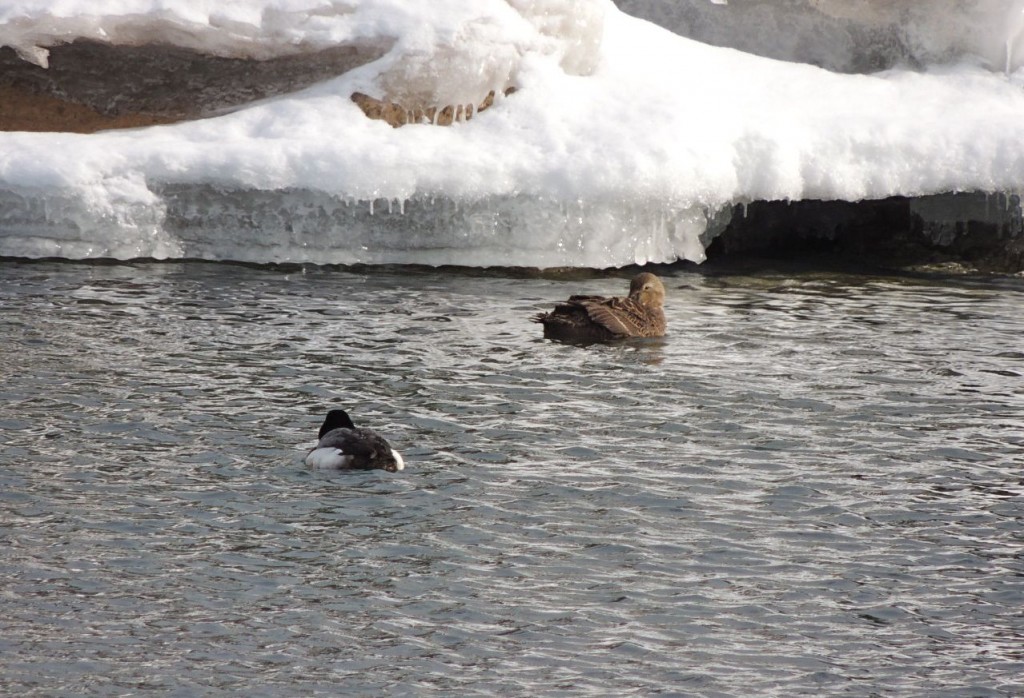
King Eiders commonly winter along the Atlantic shore but are very uncommon visitors to inland waters. I had to refer to Bob Curry’s authoritative book, “Birds of Hamilton and Surrounding Areas” to learn more. He notes that a few King Eiders find their way to the Great Lakes in November when things start getting cold and Arctic seas freeze over. Most King Eiders seen here are either females or young males although the occasional adult male shows up and that causes quite a stir because their “stunning plumage attracts birders and photographers.” I have to admit that my sighting of them was distant and the in-my-face wind off the lake didn’t help matters.

I rounded out the day with a tally of some 15 or so species, mostly common ones but also including White-winged Scoters, Red-breasted and Common Mergansers, Black Ducks, Trumpeter Swans and some gleaming Redheads. The photo series below is of a White-winged Scoter battling with a recalcitrant delicacy that he obviously viewed as needing taming. I couldn’t quite make out what he had and hoped that one of my photos would help, but all that I can say is that it looks to be organic, slippery and succulent.
